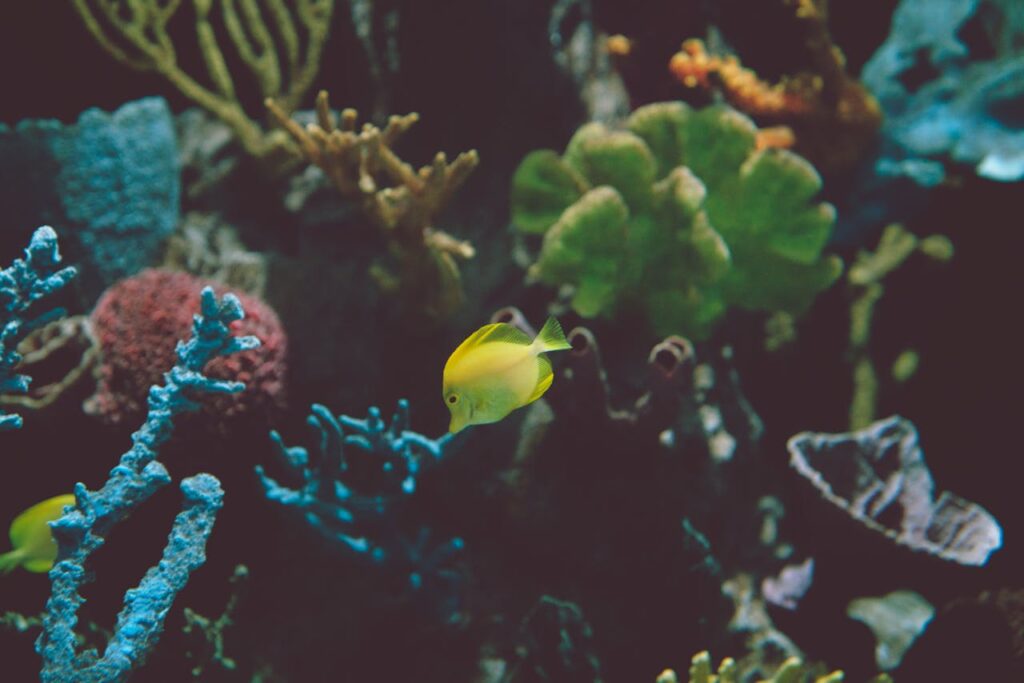Aquatic plants play an important role in any healthy aquarium. They not only decorate the tank but also play a critical role in forming a balanced ecosystem for the aquatic organisms and the fish. Aquarium plants offer many benefits, such as hiding spots and water oxygenation. Of course, plants also contribute toward algae control. So, here we will discuss several types of aquarium aquatic plants, some of the benefits they provide, and some key features to help you understand which plant is best for your tank.
Why keep aquatic plants in your aquarium?
Adding plants to an aquarium provides many practical and aesthetic advantages. These range from improving the quality of water to giving the fish a more natural environment inside the aquarium. Aquarium plants are part of a complete aquarium setup.
Natural Habitat: They recreate the fish’s natural habitat, helping to reduce the level of stress and promoting better health. Specific fish species will thrive more when they come from heavily vegetated areas, and aquatic plants will simulate their natural environment, prompting them to act or hide and forage.
Algae Control: Since plants use what the algae need—to nourish themselves—a heavily planted aquarium is much less likely to have algae-related problems. It thus needs less frequent cleaning and has a stable water condition.
Types of Aquarium Aquatic Plants
Aquatic plants vary in shapes, sizes, and needs, and the decision to which one to use comes into being according to light levels, tank size, and species of fish you have. Here are some common types:
Foreground Plants: These plants can do well short and tend to give the appearance of ‘carpets’ when spread over the bottom of the tank. There are plenty of species, but a couple popular ones are Java Moss and Dwarf Hairgrass. They can be especially well-suited for smaller tanks or as a base layer in larger setups.
Background plants: Background plants are taller and can serve to create a lush background to the tank. Some examples of the most commonly used species are Vallisneria, Water Wisteria, and Hornwort. They can grow so fast in filling the place at the back side of the aquarium, creating a beautiful “green wall.”.
Important Traits of Aquatic Aquarium Plants
You should know the following important traits when choosing your aquatic plants so that they thrive well:
Light Needs: Light is the driving force behind every growing plant, so it is important to have an idea of how much light each plant requires. Some plants, such as Anubias and Java Fern, may do well in a low-light tank, while others may require specific lighting rigs for dwarf baby trees.
Temperature and Water Parameters: There are different requirements of temperatures, pH, and water hardness among plants. Aquarium plants prefer to thrive between 20-26°C (68-78°F), but some aquarium plants require slightly warmer or cooler conditions. Regular testing of the water keeps the parameters stabilised.
Growth Rate: Some aquatic plants grow very fast, while others take time to do so. Some fast growers are impossibly difficult to keep up with unless you enjoy trimming them regularly. Others grow much more slowly and fit in anywhere. For example, Cryptocoryne is one of the slowest growers.
Conclusion
An aquarium aquatic plant is a good addition to any fish tank; not only does it create aesthetic beauty, but it also provides ample functional benefits for the whole ecosystem. With the right types of plants and proper care, you could easily develop a balanced, healthy setting that promotes the well-being of your fish, enhancing at the same time the visual appeal of your aquarium. Whether you are an amateur or an experienced aquarist, adding plants to your aquarium can transform your pet hospital into an underwater garden.

Leave a Reply